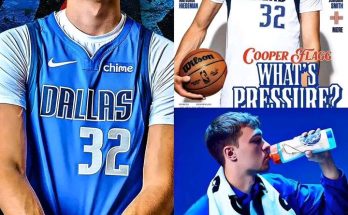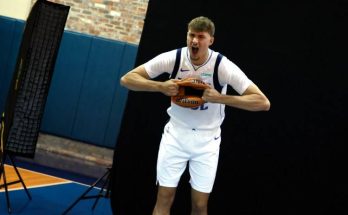Darius Miller, a key contributor to Kentucky’s 2012 National Championship team, has become widely known for his consistency, professionalism, and “sixth man” presence during his tenure under John Calipari. Recently, during an appearance on Kentucky Sports Radio, Miller shared his deeply considered perspective on two transformative coaches in Kentucky basketball history: John Calipari, under whom he played collegiately, and current head coach Mark Pope. His commentary provides fascinating insight into the contrasting philosophies and methodologies guiding these high-profile figures.
Miller began by characterizing Mark Pope’s coaching approach as exceedingly “technical.” He praised Pope’s affinity for data-driven decision-making, noting how he “treats the game like a science” and runs a meticulously intentional program. According to Miller, Pope is a genuine basketball “genius,” someone who leverages analytics and deliberate detail to position players optimally. In Miller’s words, “Everything is very intentional”—a concise testament to Pope’s structured, analytical method .
In contrast, Miller reflected on Calipari’s tenure as one defined by freedom and individual expression. The Calipari-era Wildcats teams, Miller recalled, empowered players like John Wall, Eric Bledsoe, and Jamal Murray to unleash their star power within a loose yet potent system. Calipari’s philosophy, rooted in the celebrated “dribble‑drive motion offense,” foregrounded athleticism, pace, and open-court creativity. Miller revealed that this freedom under Calipari took root in strong player trust and autonomy, a sense that deeply resonated with him and many of his teammates.
Miller did not frame the two coaches as adversaries; rather, he expressed appreciation for both, recognizing the merits each brought to the program. While Calipari fostered a playground of unrestrained talent, Pope’s hands-on precision offers a new path for growth. Miller affirmed, “Two different approaches, but I would enjoy playing for them both”.
To fully appreciate Miller’s assessments, it’s helpful to understand the wider context of each coach’s background and stylistic nuances.
**John Calipari** built his reputation across multiple programs—UMass, Memphis, Kentucky, and now Arkansas—by anchoring his success in elite recruiting, NBA-ready player development, and defensive rigor. His high-powered, up-tempo systems leveraged quick transitions and team defense, and consistently produced NBA talent ([statesman.com][2]). He became synonymous with a one‑and‑done model that churns out college stars primed for the professional stage. Off the court, Calipari created an immersive experience for his players—luxurious travel, private flights, quality meals, and a familial culture built on trust and accountability .
Yet while Calipari emphasized discipline and leadership, his intensity in games—a “live-or-die” emotional fidelity—was often on full display. Reports describe fiery sideline outbursts, passionate reprimands, and a sense of raw urgency that could intimidate as much as inspire .
**Mark Pope**, by contrast, has introduced what many consider a more measured and modern approach. A former Wildcat captain (1996 national champion), Pope has established himself through data-driven innovation, tactical spacing, ball movement, and a balanced rotational philosophy . Under his leadership at BYU, Utah Valley, and now Kentucky, he implemented deep rotations that spread minutes more equitably among rookies and veterans alike—a shift from the tightly controlled, short rotation typical under Calipari.
Pope’s demeanor during games offers a distinct contrast to Calipari’s high-wire theatrics. As one fan observed, Pope is “cool-headed” during timeouts—calm, precise, and instructive—even when the team is struggling . This poised tactician doesn’t bark orders; he conveys the craft of the game on the sideline and in practice, demonstrating techniques and encouraging players in real time.
Pope’s in-game teaching style is complemented by his off-court presence. From tailgating with fans to global recruiting trips and community engagement, he has cultivated a coach-fan rapport unseen during the Calipari era . ESPN reports Pope even flew internationally for scouting, personally attended events, and engaged with the grassroots level of Big Blue Nation—signaling a grounded, community-centered brand of leadership .
Secondly, Pope’s offense is being recognized as one of the nation’s most “innovative.” CBS Sports dubbed his schemes a work of a “mad scientist,” highlighting his preference for modern elements: prioritizing 3-pointers, empowering bigs to pass and shoot, and inverting traditional floor spacing ([si.com][4]). He is banking on a balanced, position-agnostic system—where big men like Aly Khalifa or Amari Williams can step out, swing the ball, and stretch defenses—a stark departure from the ground-bound, athletic Calipari frontcourt ([si.com][4]).
This underscores another contrast that Miller noted subtly: Pope’s attention to analytics and structure versus Calipari’s more feel-based, tempo-dominated style. Both coaches are results-oriented, but Pope uses video, data, and spacing metrics to quantify success as much as emotion or traditional hustle ([aseaofblue.com][1]).
From Miller’s vantage, each coaching philosophy has its unique advantages. Calipari’s system is liberating—players can soar, create, and win through instinct and speed. Pope’s structured environment gives athletes clear roles and sets them up through preparation, detail, and measurable expectations. One is artistry on the fly; the other is science layered through preparation. One is raw heat; the other, cool logic.
Kentucky fans listening to Miller can appreciate that the program has evolved along with the sport: from the kinetic explosion of the Calipari era to the analytical refinement of the Pope age. Miller’s insight suggests that the Wildcats thrive whichever approach they follow, provided it is authentic to the coach leading it.
It also reinforces a broader shift in basketball culture. While the emotional intensity of Calipari’s sideline presence galvanized teams, today’s game favors strategic clarity, balanced rotations, and depth-first planning. Pope’s model—deeper benches, versatile offenses, calm sideline leadership—aligns with how modern teams (college and NBA) are evolving .
That said, Miller made sure to honor the legacy of Calipari: the championship pedigree, the Final Four runs, the NBA-ready talent, and the transformational impact on Kentucky basketball . He also nodded to Pope’s bright new direction—envisioning a future defined by intellectual rigor, cohesive playing styles, and personal growth for a broader range of players.
Ultimately, Miller’s reflections frame this as a moment of respectful evolution. Kentucky basketball is not merely switching coaches; it’s inheriting two distinct legacies and synthesizing them into something new. Calipari’s strength in recruiting elite athletes and cultivating elite talent remains influential. Pope’s precision and analytic approach signals the next phase of program development. Through Miller’s perspective, fans get a rare glimpse behind the curtain: confirming that, regardless of play style, what truly anchors winning is a coach who prepares, trusts, and communicates effectively.
In one telling quote, Miller said: “Coach Pope, everything is down to the minor detail, but it puts you in a good position to showcase your game inside of a structured environment.” That captures it all. Structured freedom. Tech-forward planning. A coach who wants to break the game down and still let his players feel untethered in their expression. It’s the philosophical bridge connecting two very different but equally valued ways of coaching.
Darius Miller’s experience gives him a unique vantage. A player who thrived under Calipari’s loose, fast‑paced schemes but who now observes Pope’s rigorous, tactical framework from the inside. His verdict? Both systems can win. Both can maximize talent. And both are part of what Kentucky basketball has been—and will continue to be.
For fans wondering what’s next, Miller’s words offer reassurance: Kentucky has touched excellence under both coaches. Whether the game is coached through rhythm and tempo or through data and rotation, the program’s DNA remains rooted in trust, talent, and tradition. It’s not a matter of which way is better—it’s a matter of which way is right for this moment.


